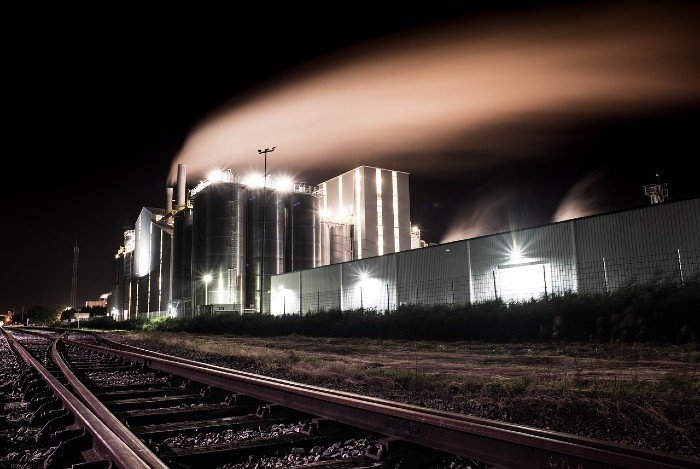Green hydrogen emerges as a potential solution to address the carbon emissions challenge in the steel industry, as highlighted in a report by Deloitte-FICCI titled “India Steel 2023: Advancing the Indian Growth Story in the Amrit Kaal Era.” According to the report, the steel sector is responsible for 12% of India’s total CO2 emissions, emitting 2.55 tonnes of CO2 per tonne of steel produced, compared to the global average of 1.85 tonnes. This report comes at a crucial time when India’s steel industry, responsible for about 240 million tonnes of carbon emissions annually, is expected to double its emissions by 2030 due to ambitious infrastructure development goals set by the government.
The report underscores the urgent need for steel producers to adopt decarbonization strategies. The government has identified green hydrogen-based Direct Reduction Iron (DRI) as a promising alternative to traditional steelmaking methods, which rely on fossil fuels, primarily coal and natural gas. Incorporating hydrogen into steel production not only enhances energy efficiency but also reduces operational costs and improves steel quality. Experts in the Deloitte report suggest that replacing fossil fuels with hydrogen in the DRI process could reduce emissions by up to 90%.
The Government’s National Green Hydrogen Mission aims to harness this potential by promoting hydrogen infrastructure development. On January 4, 2023, the Union Cabinet approved a budget of ₹19,744 crore for the mission from FY 2023-24 to FY 2029-30. The mission’s goal is to position India as a global leader in the production, utilization, and export of green hydrogen and its derivatives.
Industry estimates indicate that the viability of hydrogen technology for expansion hinges on achieving a competitive price point of approximately $1-2 per kilogram and imposing a carbon penalty of at least $50 per tonne of emissions on steel produced using traditional methods. These factors could incentivize a significant shift from coal-based to hydrogen-based steelmaking, amounting to 150 million tonnes.
Currently, international standards indicate that an average of 1.8 to 1.9 tonnes of CO2 is generated per tonne of crude steel produced, with the Indian average ranging from 2.26 to 2.8 tonnes of CO2. Anticipated growth in demand for green steel in the coming decades underscores the importance of prioritizing energy efficiency and decarbonization in the steel industry, both in India and globally.







틱톡 美사업 매각 위해 중국 관세 조금 낮춰줄 https://bammin.info/수도
美USGS 미얀마 강진 사망자 1만명 넘을 확률 https://bammin.info/71퍼센트우려
이란 미 이스라엘 핵구실 공격시 핵무기 개발 본격화 https://bammin.info/위협
머스크 300억원 퍼부었는데 ··위스콘신 대법관 선거 https://bammin.info/진보후보 승리
혼자 살면 치매 예방된다 기혼자보다 치매 https://cutypapers.com/위험 낮았다
머스크 vs 나바로 관세 충돌에 포드 CEO는 https://cutypapers.com/머스크 편?
EU 美철강관세 보복 90일 보류 트럼프 조치에 https://cutypapers.com/화답
네타냐후 아들 팔레스타인 독립 인정 추진 마크롱에 https://cutypapers.com/엿 먹어라
타국 전쟁에 한국군 끌려간다? 일본 멋대로 하나의 전장 제안 미국 https://cutypapers.com/반응은?
김치 먹어라 미국 전문가 뜻밖의 다이어트팁 https://cutypapers.com/이유는?
DHL 트럼프 관세전쟁에 800弗 이상 화물 美배송 일시중단 밤놀자주소
美 중국과 관세갈등 지속불가능 아주 가까운 미래에 완화 예상 밤놀자
美법원 트럼프 정부의 공립학교 DEI 정책 폐지 시도 제동 밤놀자최신주소
관세 늘면 소득세 줄거나 면제 트럼프 성난 민심 달래보지만 밤놀자주소
美 우크라 곡절 끝에 광물협정 서명 재건 투자기금 설치 밤놀자주소
아마존 창업자 베이조스 향후 1년간 6.6조원 규모 주식 매도 밤놀자
발표대로 관세 오르면 美연준 의장 파월 인플레 실업 위험 경고 밤놀자주소
파키스탄 인도 상대 군사작전 개시 핵 보유국간 확전 현실화 밤놀자
50년간 관광지로 활용 중인 美 최악 교도소 알카트라즈 하루 운영비 3배 달해 재개장 힘들듯 밤놀자주소
베이비몬스터 트레저 중국 팝업 스토어 성황 밤놀자주소
이스라엘 美 트럼프 중동 순방 중 가자지구 공습 약 200명 사망 밤놀자
젤렌스키 美 협상서 멀어지면 안돼 주요국 고위급 회담 제안 밤놀자최신주소
지진난 것도 아닌데 650년 된 명나라 건축물 기와가 와르르 밤놀자주소
아이폰 미국서 만들면 대당 가격 480만원 된다밤놀자
머스크의 화성우주선 스타십 9번째 지구궤도 시험비행 발사 밤놀자
각국 美관세 혼란에 신중 EU 무역협상 예정대로 진행 밤놀자최신주소
조언 좀 해주세요 트럼프 만나는 독일 총리 유경험 정상들에 SOS 밤놀자주소
러시아 쇼이구 서기 김정은과 접견 북한군 기억 영원히 할 것 밤놀자주소
트럼프 LA 이민 시위에 주방위군 투입 미 국방 해병대도 준비 밤놀자
Thank you for your sharing. I am worried that I lack creative ideas. It is your article that makes me full of hope. Thank you. But, I have a question, can you help me?
최대 30만명 죽을 수 있다 日이 난카이 대지진 공포에 떠는 이유 밤놀자주소
美해병대 이민단속 반대시위 LA 현장 투입 1992년 후 처음 밤놀자
美 州의원 부부 살해 용의자 체포 정치테러 공포 확산 밤놀자최신주소
美국방 軍 준비 완료 트럼프 이란 결정 기다리며 최종 명령 보류 밤놀자주소
메타 스케일AI 대규모 투자 전 퍼플렉시티도 인수 타진 밤놀자